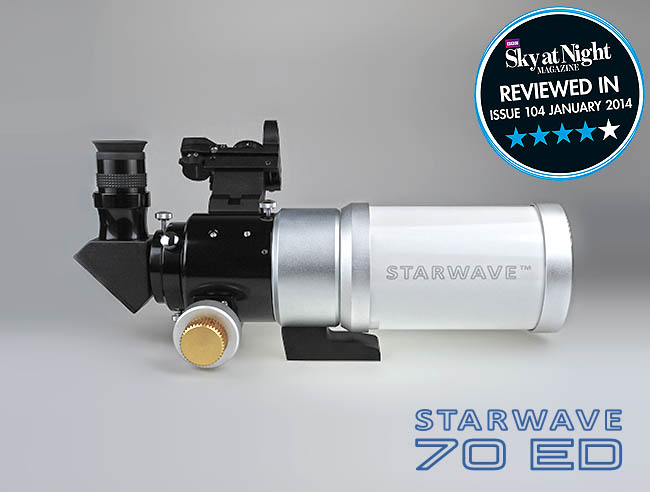FEBRUARY 2017
Everything about Refractors Part III: a summary of those available and their use for Astrophotography
This is one of over 100 articles in the Author’s Astronomy Digest including two others about refractors.
Short Focal Length Refractors
I would include refractors with apertures from 60 to 85mm in the short focal length range and, as these are so popular, there is an amazing amount of choice. These are great for viewing or imaging wide fields and I believe that every amateur astronomer should have one. The first point to address is the type of objective used. Though inexpensive, I would not recommend any simple achromats for astronomical use. Far better are the doublet objectives that use one element of an extra-dispersive glass, termed ED objectives. They typically use FPL-51 glass as the ED element to minimise chromatic aberration but, at greater expense, can use FPL-53 glass (or now FPL-55) which will reduce chromatic aberration even further or, as often is the case, enable a telescope with a given aperture to have a shorter focal length so giving a wider field of view. [See the discussion of objective lenses in the first refractor essay.] A relatively small number of refractors will use a triplet objective using either glass type as one element to give an even better corrected image but note that they will take longer to cool down to outside temperatures. Fluorite crystal can also be employed for one element of a doublet objective to give images of exceptional quality and contrast.
Doublet ED refractors
Altair Astro sell ‘Lightwave’ ED refractors of 66mm and 72mm apertures each with an f/6 focal ratio that are excellent value for money. Pleasingly, both have rack and pinion focusers which are increasingly taking over from Crayford focusers. Also with a rack and pinion focuser, they sell the ‘Lightwave 80ED-R’ f/6 refractor using one element of FPL-53 glass to give enhanced colour correction. The also sell the Starwave 70ED, f/6, Travel Refractor having a 2-inch Crayford focuser.
